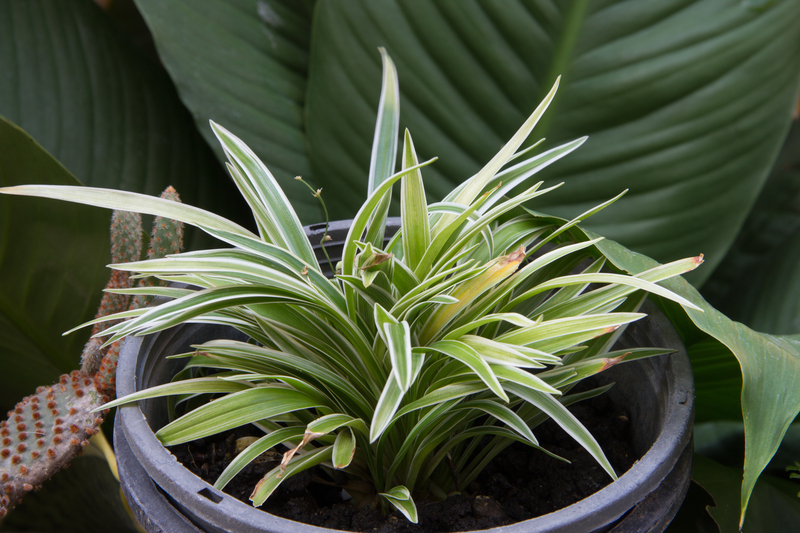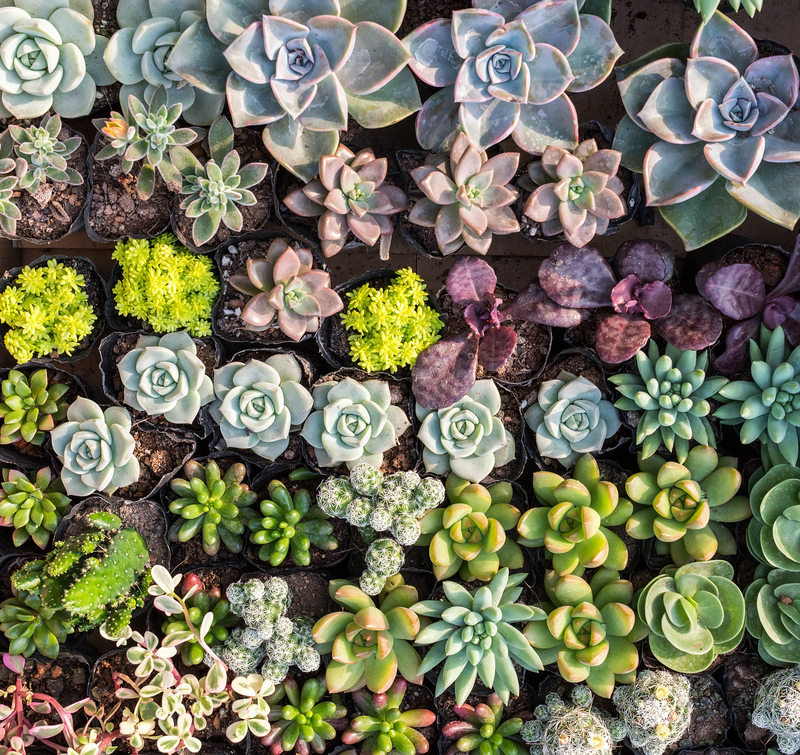Growing solutions: Gardening as a means to mitigate climate change
Posted on 16/06/2025
Growing Solutions: Gardening as a Means to Mitigate Climate Change
As climate change becomes an increasingly urgent crisis, individuals are seeking actionable ways to reduce their carbon footprint and promote sustainability. Gardening offers more than just aesthetic pleasure--it has the power to significantly impact carbon sequestration, local biodiversity, and urban ecology. Discover how home gardeners and communities can nurture the planet, one garden at a time.
Understanding the Connections Between Gardening and Climate Change
Climate change refers to long-term shifts in temperatures and weather patterns. Much of this is driven by human activities, particularly the release of greenhouse gases (GHGs) like carbon dioxide (CO2) from fossil fuels. While major systemic changes are essential for global impact, gardening for climate mitigation is a grassroots solution with surprisingly powerful effects.
How Does Gardening Help Mitigate Climate Change?
- Carbon sequestration: Plants absorb CO2 from the atmosphere during photosynthesis and store it in their tissues and the surrounding soil.
- Soil health improvement: Healthy garden soils are rich in organic matter, enhancing their ability to trap carbon.
- Support for local biodiversity: Well-chosen plants foster habitats for pollinators and other wildlife, making ecosystems more resilient.
- Reduced urban heat: Gardens cool their surroundings and reduce the urban heat-island effect.
- Less food miles: Growing your own food cuts down on transport emissions associated with commercial agriculture.
Let's explore each of these growing solutions in detail, uncovering why gardening and climate change are so intimately related.

1. Gardening for Carbon Sequestration
Carbon sequestration is the process of capturing and storing atmospheric CO2. Vegetation--especially trees, shrubs, and perennial plants--acts as a carbon sink by drawing down carbon during photosynthesis. The greater the biomass in your garden, the more carbon is stored.
Practical Steps to Maximize Carbon Capture
- Plant trees and shrubs: Trees can store massive amounts of carbon over their lifetimes, making them an essential part of climate-friendly gardening.
- Increase perennial plants: Perennials live for several years, locking carbon below ground in roots and in long-lived aboveground growth.
- Add ground cover: Plants like clover, creeping thyme, and native grasses conserve soil moisture and enhance soil carbon stocks.
Fun fact: An established tree absorbs about 21 kg of CO2 per year. Imagine the cumulative effect of every gardener planting even one tree!
2. Improving Soil Health to Combat Climate Change
Healthy soils are a hidden climate change mitigation tool. They aren't just dirt; they're bustling with microorganisms that help trap carbon in stable forms, sometimes for centuries. Degraded soils release carbon, while well-managed gardens can continually build soil organic matter and thus keep carbon in the ground.
Regenerative Gardening Practices
- Composting: Adding compost returns nutrients and organic matter to the earth, feeding soil microbes that stabilize carbon.
- Mulching: Organic mulches (leaves, straw, wood chips) decompose over time and boost soil's carbon content.
- Minimal tillage: Frequent digging or tilling speeds up decomposition and releases stored carbon, so opt for no-dig gardening methods when possible.
Improving your garden's soil health does more than store carbon: it boosts plant productivity, saves water, and helps plants resist disease. That's a multi-layered climate solution!
3. Enhancing Biodiversity Through Garden Design
Biodiverse gardens are more resilient to climate stresses like heat, drought, and invasive pests. Native plants support local ecosystems, providing shelter and food for wildlife while minimizing the need for water and fertilizers.
Tips for a Climate-Resilient, Biodiverse Garden
- Mix plant types: Combines trees, shrubs, perennials, annuals, and ground covers for layered, productive plantings.
- Go native: Select plants adapted to your region's climate. Local plant species thrive with less maintenance and water.
- Create wildlife habitats: Leave ~some wild areas for pollinators, birds, and beneficial insects.
- Avoid pesticides/herbicides: Chemicals disrupt ecosystems and can harm pollinators essential for climate-smart agriculture.
Pollinator-friendly gardening not only boosts food production in your garden but also supports healthy regional food webs, which are foundational for tackling climate adaptation.
4. Urban Gardening: Cooling Cities and Reducing Emissions
Urban gardens are particularly powerful growing solutions for climate change. Asphalt and concrete trap heat, raising city temperatures. Gardens and green spaces absorb sunlight, provide shade, and transpire water, collectively lowering local temperatures--a phenomenon known as the urban heat island effect.
Urban Gardening Strategies for Climate Action
- Green roofs and walls: Vegetated surfaces insulate buildings, reduce cooling needs, and capture rainwater.
- Community gardens: Utilize abandoned lots or public spaces to grow food and increase green cover.
- Container gardening: Even small patios or balconies can host carbon-sequestering plants.
- Street tree planting: Trees along roads not only draw down carbon but also cool and filter city air.
As cities expand, integrating climate change gardening solutions becomes crucial for urban well-being and environmental health.
5. Reducing Food Miles and Supporting Local Food Systems
The food we eat often travels hundreds or thousands of miles to reach our plates, burning fossil fuels and increasing emissions. Home vegetable gardens and urban farming initiatives dramatically reduce the carbon footprint associated with "food miles."
Benefits of Growing Your Own Food
- Lower emissions: Homegrown food uses zero air, sea, or road transport.
- Zero packaging: Fresh-picked produce eliminates single-use plastics.
- Supports healthy diets: Access to fresh fruits and vegetables boosts family nutrition.
- Can be climate-smart: Crop rotation, no-dig beds, and organic methods all lock more carbon in your soil.
Try starting with easy, high-yield crops like tomatoes, lettuce, beans, and herbs to get maximum impact for minimal input.
6. Water Management and Sustainable Gardening
Climate change brings more frequent droughts and intense rainfall. Water-wise gardening conserves this precious resource while reinforcing climate resilience. Less reliance on municipal water means fewer emissions from water processing and pumping.
Key Water-Saving Techniques
- Rainwater harvesting: Collect roof runoff for irrigation needs.
- Drip irrigation: Delivers water directly to plant roots, reducing evaporation.
- Drought-tolerant landscaping: Prioritize species that thrive with little watering, especially natives and succulents.
- Mulching: Conserves soil moisture and minimizes temperature fluctuations.
This approach not only saves water but also makes your climate mitigation gardening more robust in the face of changing weather patterns.
7. Community Solutions: Gardening Collectively for a Cooler Planet
Individual gardens are vital, but collective action multiplies impact. Schools, businesses, and neighborhood groups can together establish food forests, pollinator corridors, and rain gardens. These collaborative projects empower people, strengthen social bonds, and promote climate-friendly gardening practices at scale.
Community Gardening Benefits
- Improves local air quality and reduces city-wide heat.
- Enhances neighborhood food security.
- Boosts education: Gardening teaches children and adults about ecology and the science of climate mitigation.
- Motivates climate action: Public visibility and shared successes inspire broader environmental efforts.
8. Innovative Gardening Approaches for Climate Change Adaptation
New techniques are emerging that take climate-smart gardening to the next level. Consider exploring:
- Permaculture: Mimics natural ecosystems for ultra-efficient, low-impact gardening.
- Agroforestry: Combines trees with crops for maximum carbon drawdown and productivity.
- Biochar: Adding biochar to soil locks away carbon for centuries.
- Hydroponics and aquaponics: Grow food with less water and space--a great solution for city dwellers.
Adopting these advanced methods multiplies the effect of gardening in climate mitigation--ensuring our gardens serve as powerful climate solutions for generations to come.

Common Barriers and How to Overcome Them
Climate change gardening solutions are accessible to nearly everyone--but challenges remain. Here's how to address them:
- Limited space? Use vertical gardens, containers, or window boxes for mini green havens.
- Poor soil? Start with raised beds, and build fertility with compost and mulches.
- High maintenance worries? Choose low-care native perennials, and let part of the garden "go wild."
- Lack of experience? Join local gardening clubs, attend workshops, or take advantage of online resources and community programs.
If each person made even a small change--such as planting a tree, composting kitchen scraps, or growing a pot of herbs--the collective impact would be profound.
Conclusion: A Greener Future, One Garden at a Time
Gardening as a means to mitigate climate change is more than a feel-good hobby--it's a vital and actionable strategy for a healthier Earth. The benefits touch every level, from richer soils and rescued pollinators to cooler cities and more resilient communities.
Every seed planted, every compost heap turned, and every wild corner left for nature is a step towards stabilizing our climate. As we face climate challenges head-on, embracing gardening for climate action empowers us all, offering hope, beauty, food, and carbon capture in our own backyards.

